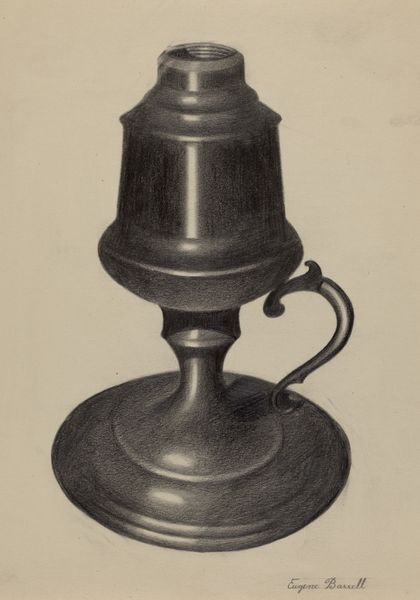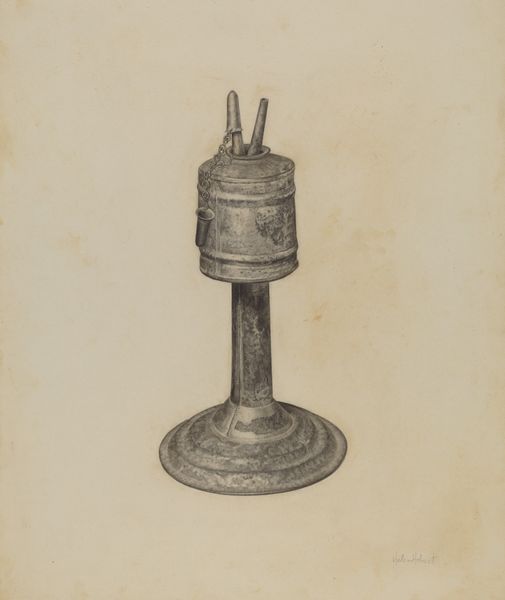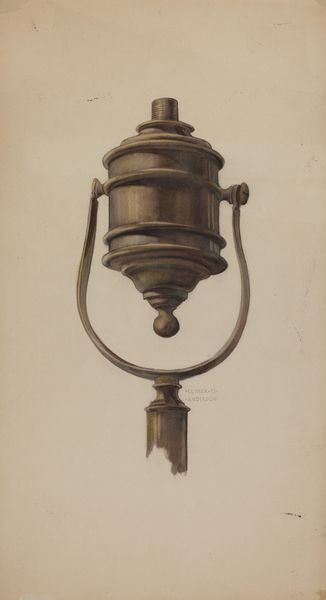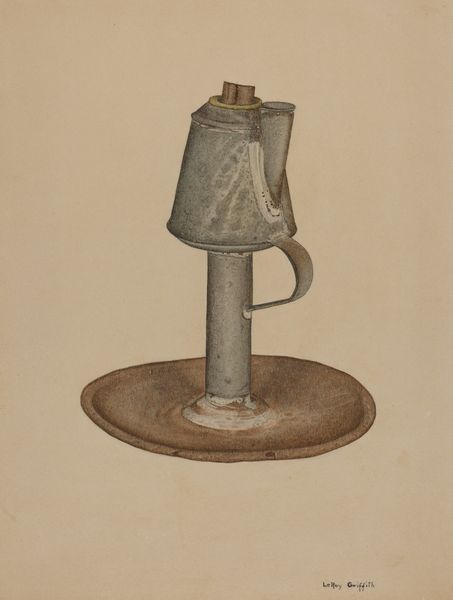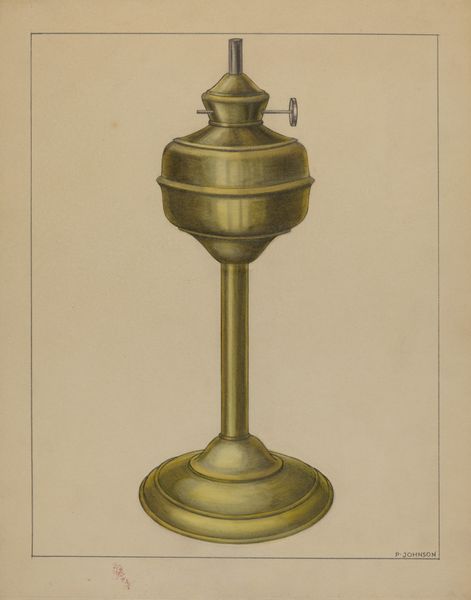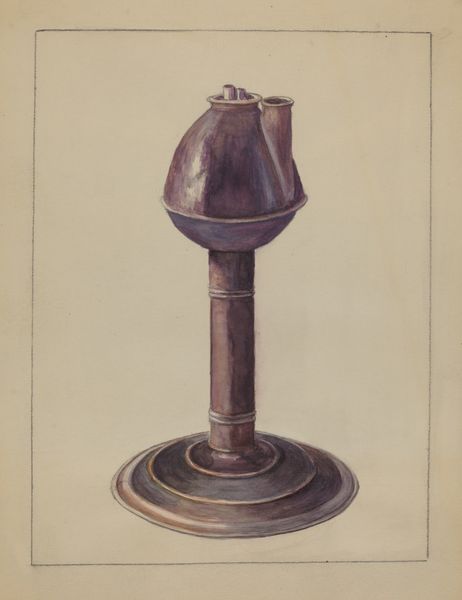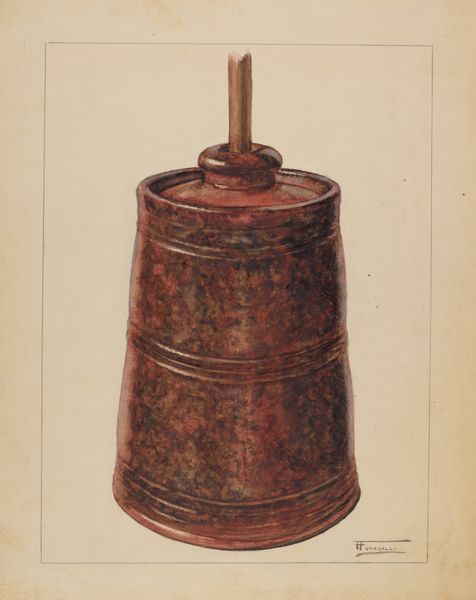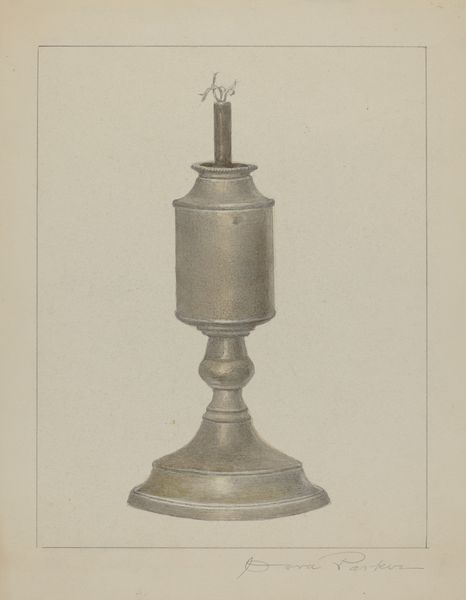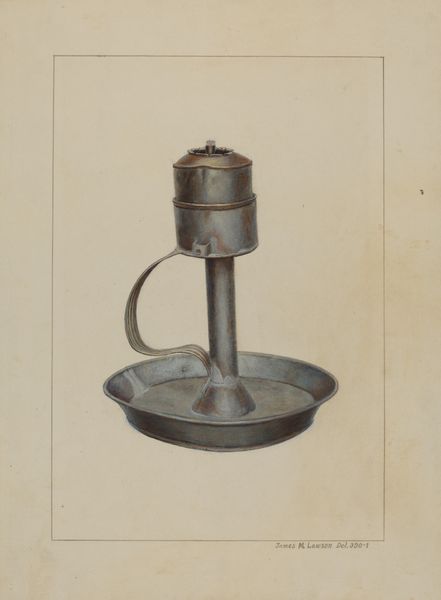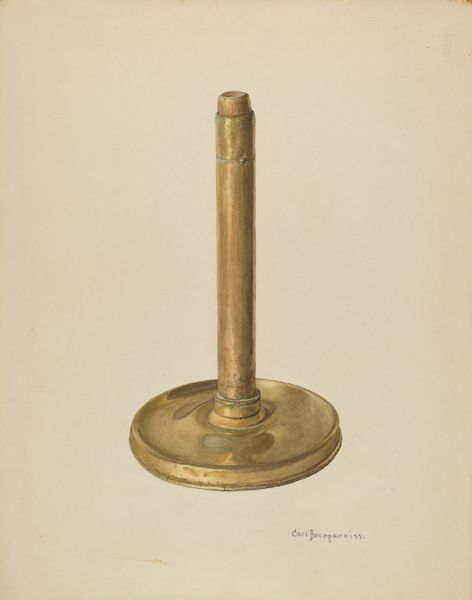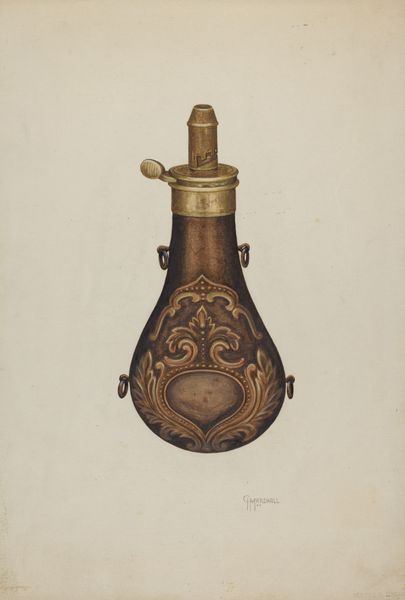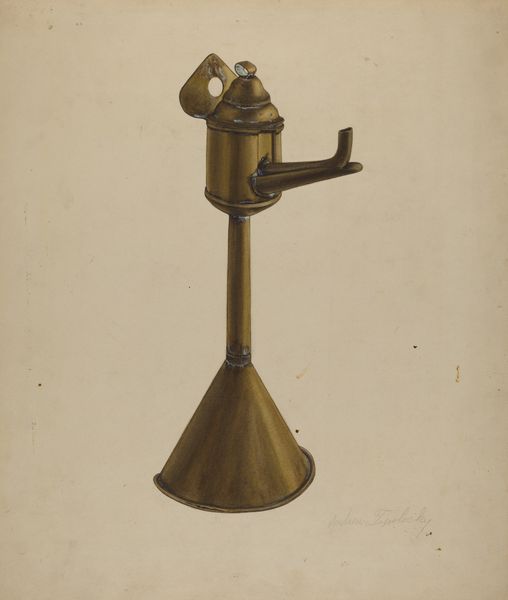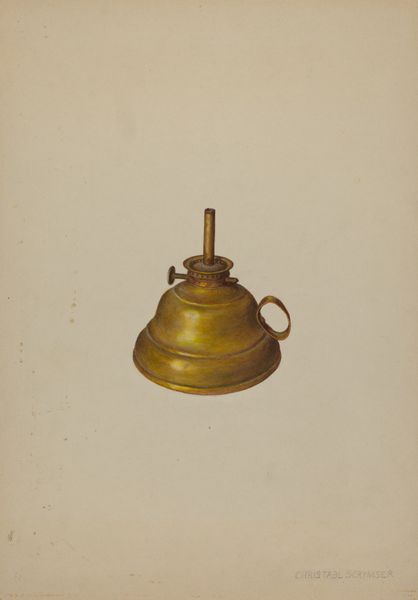
drawing, watercolor
#
drawing
#
watercolor
#
watercolor
#
realism
Dimensions: overall: 36.8 x 28 cm (14 1/2 x 11 in.) Original IAD Object: 8 7/8" high; 5" wide
Copyright: National Gallery of Art: CC0 1.0
Curator: John H. Tercuzzi’s circa 1940 piece, "Tubular Hand Lamp," rendered in watercolor and drawing techniques, is before us. It's fascinating how such a commonplace object can be elevated through artistic interpretation. Editor: I’m struck immediately by its muted palette. The browns and bronzes feel quite somber. Almost industrial. Curator: Absolutely, and it's essential to situate Tercuzzi's work within the context of its time. The 1940s, marked by global conflict and societal shifts, might see the humble hand lamp embodying both practicality and a sense of resilience, perhaps even acting as a subtle comment on labor and utility during times of hardship. Editor: The execution is very interesting from a purely aesthetic point. Look how Tercuzzi manages to render metallic textures through layering of watercolors. He has captured both form and materiality very effectively. Curator: It raises questions about the artist's intent, wouldn't you agree? Why choose this object, this lamp? Does it function as a symbol for hope during these challenging years, or is the artist perhaps investigating forms of labor? Moreover, given the period, thinking about accessibility to electric lighting – the lamp takes on meanings related to social stratification. Editor: Those contextual points are intriguing, and they prompt a consideration of class. Looking closely at the form, the circular, almost brutalist shape contrasts quite starkly with the light, delicate medium of watercolor. This juxtaposition seems intentional. The very shape seems solid, dependable… Curator: Precisely. Tercuzzi's background may provide crucial insights. Were they working-class, middle-class? What sociopolitical conversations might have surrounded them during the execution of this image? This background informs our interpretation, expanding on that formal analysis. Editor: I concede that considering Tercuzzi's context adds another dimension to the work. However, I'm continually drawn back to the meticulous application of color, and how that very medium choices gives an everyday object a curious aura of timelessness. Curator: It's a fruitful interplay between form and historical understanding – and ultimately brings us to deeper meaning about art's value in interpreting our complex world. Editor: I will walk away from our discussion with new appreciation for the piece—with your perspectives, the discussion highlights new layers of complexity in what was on the surface simply a very well executed object study.
Comments
No comments
Be the first to comment and join the conversation on the ultimate creative platform.
